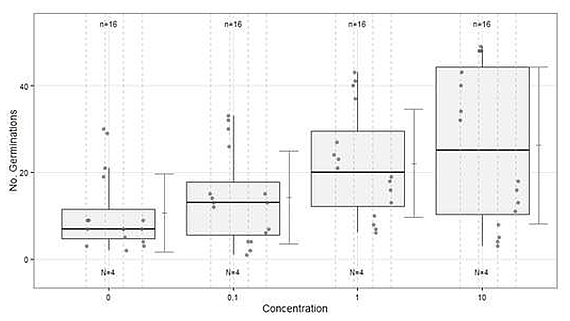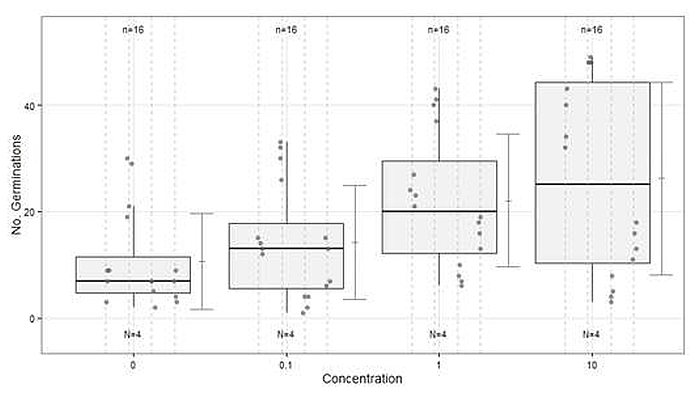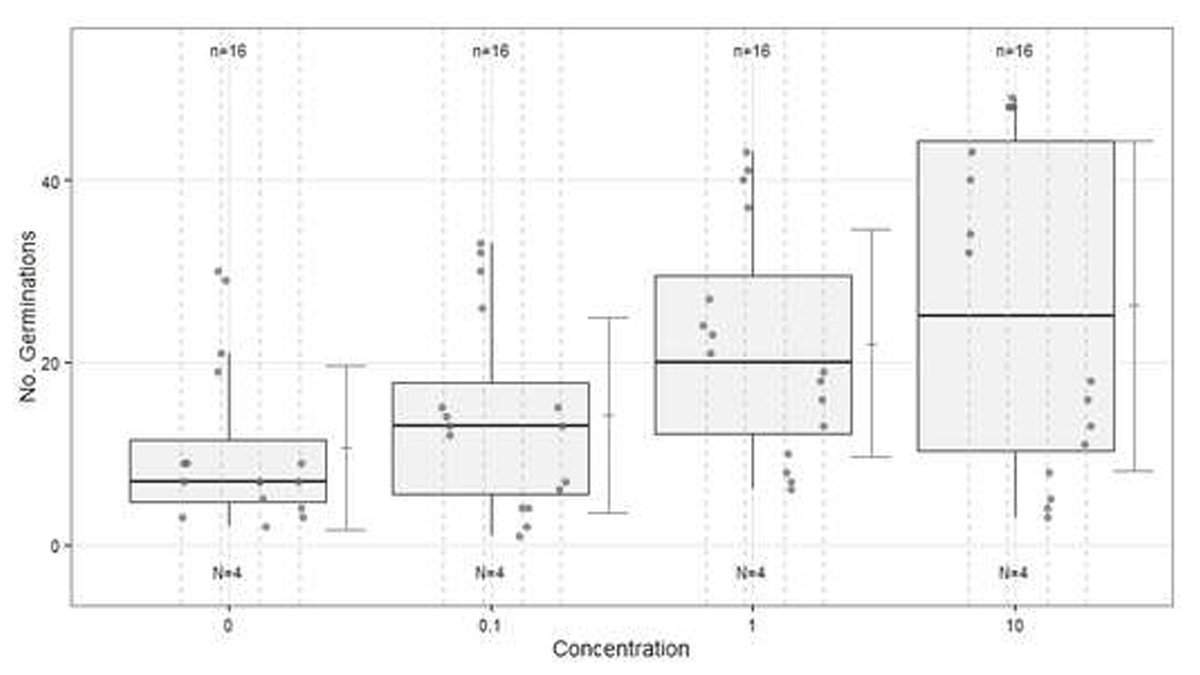Consultation on statistical methods



What we offer:
- Consulting on publication projects
- per person max. 4 working hours
- Discussion of your experimental design and recommendation of suitable statistical methods
- Details on the implementation of proposed methods in the software R
- Description and explanation of the statistical methods used, indication of references to the methods used, brief discussion on the interpretation of the results
Not included:
- Advice on final and interim reports, B.Sc. theses, internships, etc.
- Consultation without prior appointment by e-mail
- Analysis of your data sets by biostatistics staff members
- Troubleshooting in Excel, SigmaPlot, Minitab, Matlab, Statistica, Stata, SPSS, SAS, ...
Recommendations to design, description and datastructure
-
Design your experiment
We highly recommend to arrange a first consultancy date before you set up your study or experiment to discuss the statistical aspects of experimental design. The prerequisite of any statistical evaluation is the randomized replication of treatments of interest in experimental settings or a proper plan for obtaining random samples in observational studies
-
Describe your experiment
When you describe your experiment, think of the following five issues:
-
Experimental units: What is your experimental unit? In a lab experiment, the experimental units might be e.g., single plants, animals, or cell cultures in petri dishes. In a field or greenhouse experiment, they might be e.g., single plants, plots, or entire fields.
-
Randomization structure: Randomization means that the treatments of interest are repeatedly and randomly assigned to the single experimental units, at least at some level of the experiment. Name your randomization structure unmistakably (“completely randomized”, “split-plot”, “block design”, …) or describe it concisely (a picture or drawing might help you). How have experimental units been arranged in time and space? What sub-structures are involved in that arrangement (e.g., technical replications, sub-sampling, …)?
-
Response variables: Which variables measure the effect you are interested in? Are they measured in continuous numbers, counts of events or individuals, percentages/proportions, ratios of two primary variables, …?
-
Explanatory variables: Which variables or factors are supposed to explain differences in the response variables? How many factor levels are there? Which factors/variables are of primary interest?
-
Experimental question: Explain the purpose of your research as precisely as possible. If you're not quite sure about the experimental question of interest, talk to your supervisor first! “I want to find out if increasing N fertilization has an impact on the leaf area”, is a sensible research goal. “I want to find significant p-values”, is not.
-
-
Clean up our data
EN [Text: Daten aufräumen]
- If possible, submit your data as txt or csv file. Excel-type xls files can be accepted as well.
- Data that should be analyzed together should (normally) be in one single file (if you provide an xls file: in one single sheet; exception, e.g., high dimensional data).
- Record your data in flat file format: there should be one separate line for each experimental unit (plant, animal, pot, petri dish, …) in your data table i.e., all information regarding a certain experimental unit should be in one row. The columns should contain the values of observed variables and controlled factors as well as information in which partial experiment or randomization structure (e.g., in which block) the particular experimental units were placed (exception: highdimensional data).
- All columns should have (short) headers. They may contain letters and numbers but no special characters (ä ß µ % $), mathematical operators (+ - * / ^), brackets, or blanks. Underscores are okay.
- Code missing values by “NA” and not by numerical values like 0 or 999.
- Denote all structures in the experiment which might influence the outcome by introducing a new variable (i.e., a new column), even if these variables are not of direct interest (e.g., if parts of the experiment were performed in different weeks, introduce a new column that codes which observation comes from which week).
- If you submit an xls file, your data sheet for statistical analysis should not contain:
- formulas, calculations or graphs
- comments and explanations
- blank lines, empty columns or empty cells within the table
- colors, fonts, boldface, etc. as the only distinction of treatments or replications
- links to other documents
- several tables in one sheet
-
Example dataset in flat file format
[Translate to English:] Ein Datensatz im flat file format, bei dem alles eindeutig deklariert ist, könnte so aussehen:
Jahr
Ort
Duenger
Gewicht
Blattflaeche
Qualitaet
2012
Ruthe
A
22.43
117.4
2
2012
Ruthe
B
25.91
129.3
3
2012
Ruthe
C
26.11
NA
2
2012
Ruthe
D
29.98
138.5
1
2012
Hannover
A
23.57
120.1
3
2012
Hannover
B
26.92
125.6
3
…
…
…
…
…
…
2013
Ruthe
A
21.88
118.2
2
2013
Ruthe
B
23.56
123.3
3
…
…
…
…
…
…
Contact
In order to make the consultation as effective as possible, we ask for some information in advance by e-mail:
- Name, email address, phone number, institute
- a short, precise description of the experiment:
- What is the goal of the experiment?
- Describe your experimental design (experimental units, randomization, repetitions ...)
- Which variables were collected or varied in the experiment? Variables to be analysed, variables possibly affecting them (factors, covariates)?
- Which questions are to be investigated on the basis of the data?
- In case of several to many questionsor open issues: Order the questions by importance!
- a data set (if possible):
- as an attachment in one of the usual file formats (xlsx, csv, txt, ...),
- the individual rows represent individual objects/observation units,
- the columns contain the different variables
- (exceptions are possible for high dimensional data)
- a consulting agreement signed by the supervisor.
Herrenhäuser Str. 2
30419 Hannover/Germany
Herrenhäuser Str. 2
30419 Hannover/Germany


